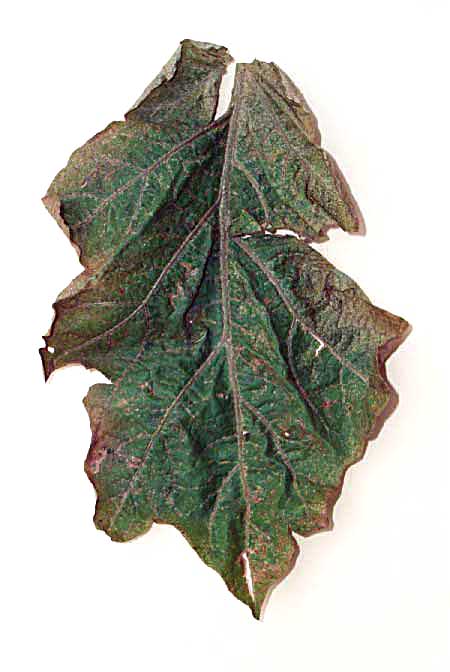 July 2002. Farmers in the Sigatoka valley, Fiji, are experiencing severe thrips damage to the eggplant crop. Leaves show severe browning around the leaf veins (see symptoms in the attached photo), and fruit are scarred heavily and unsuitable for export. None of the pesticides available in Fiji appears to have any impact on the thrips, numbers of which exceed many hundreds per leaf. In their desperation, farmers have applied the following pesticides to no avail: Lannate, Suncis (pyrethroid), Endosulfan, Malathion, Amitraz, and Avermectin. What can they do? July 2002. Farmers in the Sigatoka valley, Fiji, are experiencing severe thrips damage to the eggplant crop. Leaves show severe browning around the leaf veins (see symptoms in the attached photo), and fruit are scarred heavily and unsuitable for export. None of the pesticides available in Fiji appears to have any impact on the thrips, numbers of which exceed many hundreds per leaf. In their desperation, farmers have applied the following pesticides to no avail: Lannate, Suncis (pyrethroid), Endosulfan, Malathion, Amitraz, and Avermectin. What can they do?
First, the identification of the thrip was questioned: is it Thrips tabaci, or could it be the Western Flower Thrips, Frankliniella, which has invaded New Zealand in recent years. [Pohnpei, Federated States of Micronesia reported that every shipment of Chinese cabbage form USA (California) contains Western Flower Thrips, Frankiniella occidentalis. It was identified by CSIRO.
Second, it was thought unlikely that insecticide would solve Fiji’s thrip problem. The description suggests that there is insecticide resistance and/or cross resistance occurring in the local thrips population. If so, then farmers will only exacerbate the problem by applying more pesticides. Pest outbreaks associated with heavy and frequent pesticide use are also frequently a symptom of damaged natural enemy control where predators and parasites that might otherwise have kept the thrips in check have been wiped out by the pesticides, or perhaps due to other related disturbances in the agro-ecosystem. The current thrips pest management system should be looked at to try to assess where the breakdown in control is occurring that allows the thrips populations to go into outbreak behavior. Some of the chemicals you mentioned are pretty broad spectrum, toxic compounds that are likely to reduce natural enemies, so an IPM approach using ‘softe’r pesticides and other non-insecticidal control methods would be best in the long term.
Some of the questions about the thrips problem that need to be answer are:
1. What is the thrips species, and how long have the thrips outbreaks been occurring?
2. Has the thrips in question been on Fiji a long time with the outbreaks occurring periodically, or
3. Is it a new pest exploiting an abundant food source, and
4. Is the thrips outbreak limited to the one area, or is it widespread throughout the growing area of Fiji?
|
